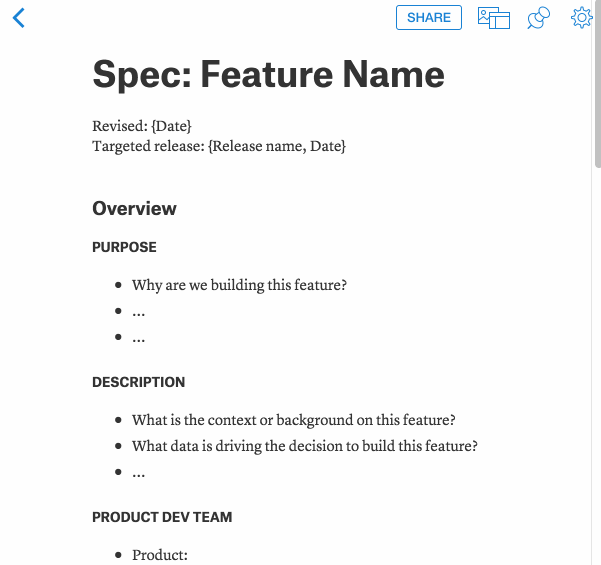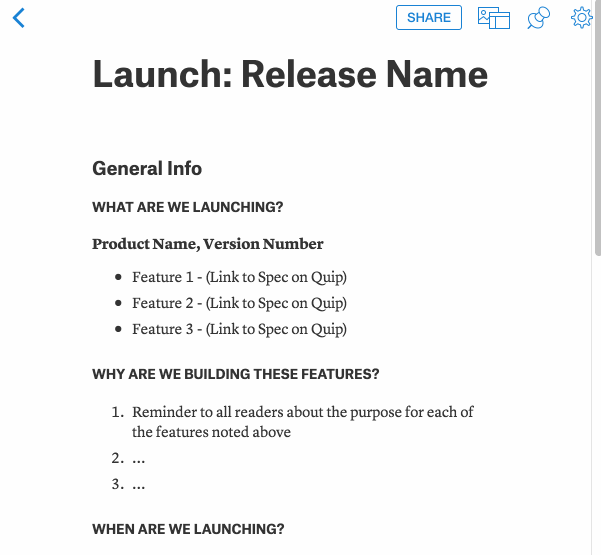Creating Connections: How Path Does Product Development

Path is a technology company focused on bringing you closer to the people you care about most. This is reflected not only in their products, but in the collaborative work culture they've created. We sat down with Cynthia, Nate, and Libby from the Path product team to learn more about their approach to product development and how they use Quip on a daily basis.
Path has two core products: Path — an elegant social network for you and your closest friends and family, and Path Talk — a messaging app that enables smart and private communication with people and places (like restaurants and stores). You can download both apps for free on the App Store or Play Store.
At Path, features are conceptualized in an environment that encourages open and collaborative brainstorming. The product team believes that great ideas can come from anywhere, so they do things like hold “open office hours” once a week so anyone can come discuss an idea for a feature or product. It is also not uncommon for hallway conversations to become features, or for an engineer to prototype an idea they have been wanting to build and for it to end up in the next release.
Quip is also an essential part of how Path manages an open but organized product process. Before Quip, the Path team had tried a number of different products to help them publicize the roadmap, build out product specs, and organize product launches. Quip enabled Path to simplify the number of tools they use down to Slack for real-time communication, Quip as their wiki / productivity suite, and Red Pen to discuss mocks. The whole company is organized in a single shared folder on Quip, and they call Quip their “source of truth” for everything that's currently being worked on as well as all past launches and projects.
A Focused and Organized Roadmap
The plan of record for everything that is being worked on — whether it is being spec'd by product, mocked up by the design team, prototyped by the engineering team, or about to be released — is Path's roadmap.
Even with the open flow of ideas at Path, there still is a need to pare down all the potential features to a prioritized list. The underlying strategic vision for the company is carefully considered when deciding which features are to be prioritized and when they should be included in a release. Nate explains, "A few things are really important to us when we think about our product process. Customer feedback plays a huge role as does the effort and impact matrix. We like to weigh the amount of resources needed to build a feature against how important it is to people who use our product and the effect it will have on our key metrics.”
This effort and impact balance is also considered with engineering resources, “We work with engineering to say 'If we are going to build these things, how much time will it take?'. We estimate level of effort in 'days, weeks, and months'.” Nate continues, “Not everything can be high impact / low effort, but the projects that are will move to the top of the roadmap.” This thought process is reflected in the product team's top level roadmap document. The roadmap document exists as a collaborative Quip spreadsheet and is organized by release. The release currently being worked on is at the top of the roadmap document, and below that is the next release (and the one after that). Key info for each feature is outlined in the doc, including who is working on the project, what resources will be required, and links to essential documents.
The team recently released a significant new update, Path 4.3 and Talk 1.3.1. This release includes the ability to use stickers in more ways (like on photos), quickly share photos from countless apps, and more. The product team walked us through the planning process for this release and demonstrated how they formulate a roadmap, write product specs, and coordinate a launch across several teams.
Documenting Feature Development as it Happens
There are different methods for conceptualizing a product feature. At Path, ideas can truly come from anywhere. “We have three different teams dedicated to product development: design, engineering, and product. Designers build mocks, engineers build prototypes,” explains Nate. “But Product Managers typically express themselves with words and numbers — so some features start as a spec.”
Regardless of the genesis of an idea for a feature, it will inevitably be documented by the product managers in the form of a formalized spec. The team has an organized method of writing specs that evolves as the feature does. The spec becomes the source of truth for the product, design, and engineering teams.
The template for a spec has been honed by the product team through experience. It typically includes the most important info on top: what the feature is, who is involved, what the goal is, and what metrics are anticipated to be affected. The spec also contains links to mockups, meeting notes, and info on the next version of the feature.

If you want to try Path's template out for yourself, check out this Quip doc. To copy the template, click the gear menu at the top right of the document and select “Copy”. It will make a copy on your Quip Desktop.
To execute these projects, product and engineering break each feature down into tasks and assign people to work on them. The culmination of these efforts drives toward a release.
Coordinating a Launch Across Multiple Teams
At Path, launches are also planned and executed using Quip. The team has built a template “Launch Document” that has all the appropriate sections to create an organized and efficient launch. “While the spec faces the design, engineering and product teams, the launch document faces the outbound side of the company,” Nate explains. “ It's a plan of record for marketing, PR, legal, customer support — everyone who owns some part of the launch.”
The document is used as a central location for all teams involved in the customer-facing launch. Marketing writes messaging and app descriptions, the PR team works on blog posts, and the social media team works on the content plan for their various channels. Check out this template to see exactly how Path organizes this document. You can make a copy to your Quip desktop to try it out for yourself.

Most importantly, the document also contains a tactical timeline for launch day. Cynthia explains, “Every minute really matters. We use a launch checklist to @-mention everyone responsible for specific tasks. It's for coordination — a big part of our job.” With all teams on board, the launch has the greatest chance to make an impact and do justice to all the hard work put into crafting the release.
A Sum of Its Parts
Path has been using Quip for more than a year to help run their company. At this point, Quip serves both as a source of truth for the most important things currently happening at Path, but also for a historical archive of past launches and discussions. Over time, Quip has become not just a simple place to write documents and work together, but also a wiki where the team can centralize all the information — past and present.
If you want to find out more about how your team can use Quip, drop us a line.
